How long does a new, never used battery for an ATV 12V last on the shelf? How long will it last with a battery tender?
You are using an out of date browser. It may not display this or other websites correctly.
You should upgrade or use an alternative browser.
You should upgrade or use an alternative browser.
Battery life
- Thread starter chromebumpers
- Start date
short answer, the rate a battery looses its charge depends on the design and capacity but after about 2 weeks without a trickle charger is usually pushing expectations, with a trickle charger 2-3 years is common
http://custombatterycables.com/product_info.htm
having heavy gauge COPPER battery and ground connection cables with the correct ends, and a 140 amp-to-200 amp alternator goes a long way towards
reducing potential battery and starter related issues
HAVING A HIGH AMP (160-220 amp) QUALITY ALTERNATOR AND A DECENT BATTERY, WITH GOOD CLEAN CABLE CONNECTIONS HELPS IMMENSELY
http://www.summitracing.com/parts/tff-8173nep/applications/year/1996
How long does it take to charge a battery?
The more discharged that a battery is, then the longer it will take to recharge it. Usually it takes several hours to effectively recharge a battery.
If a battery is very discharged then it can take up to 12 hours or more to recharge it. Whilerecharging a battery, if the battery becomes hot when you touch it then stop charging it.
Slow charge: It is best to slow charge the battery. Slow charging rates vary depending on the battery's type and capacity. However when charging an automotive battery, 10-amps or less is considered a slow charge while 20-amps or above is generally considered a fast charge.
Fast charge: Repeated fast charges on a battery may overcharge a battery and reduceservice life.
Step 1: Determine how long to recharge a battery by calculating how much capacity your battery has. For example, an Interstate battery with the part number MT-34 has 120 minutes reserve capacity. In order to calculate the amount of amp-hours in a battery, the rule of thumb method is to multiply the reserve capacity by 0.6. In the case of a MT-34, 120 minutes reserve capacity multiplied by 0.6 = approximately 72 amp-hours (at the 20-hour rate).
Step 2: Use a voltmeter to measure the remaining voltage in the battery. For example, if the voltmeter shows a voltage reading of 12.4 volts then the battery is approximately only 50% charged. Since the battery is 50% charged, then this means that there are approximately half of the 72 amp-hours in the battery. Therefore it is necessary to put about 36 amp hours plus 15% more to compensate for the internal resistance in the battery for a total of 36 amps + 36 x 0.15 = around 42 amp-hours back into the battery.
Step 3: Charge the battery at a 10-amp rate. 42 amp-hours needed by the battery divided by 10 amp charge = it will take around 4-1/2 hours to recharge the battery. (The best charger to use in order to charge a car battery is a 3-stage automatic 12 volt /10amp charger.) However, the charger really doesn't output the entire 10 amps during the chargecycle because it automatically limits the voltage and the amperage during the charge cycle. You may actually only see about 1/2 the output over the time period that you are actually charging the battery. For that reason, it can easily take 9 hours or more to fully recharge the battery. Even after 9 hours, because of the reduced voltage, the battery may require more charging to get it 100% charged.
Step 4: Use a voltmeter or, better, check the cells with a hydrometer to make sure the battery is fully charged.
http://custombatterycables.com/product_info.htm
having heavy gauge COPPER battery and ground connection cables with the correct ends, and a 140 amp-to-200 amp alternator goes a long way towards
reducing potential battery and starter related issues
HAVING A HIGH AMP (160-220 amp) QUALITY ALTERNATOR AND A DECENT BATTERY, WITH GOOD CLEAN CABLE CONNECTIONS HELPS IMMENSELY
http://www.summitracing.com/parts/tff-8173nep/applications/year/1996
How long does it take to charge a battery?
The more discharged that a battery is, then the longer it will take to recharge it. Usually it takes several hours to effectively recharge a battery.
If a battery is very discharged then it can take up to 12 hours or more to recharge it. Whilerecharging a battery, if the battery becomes hot when you touch it then stop charging it.
Slow charge: It is best to slow charge the battery. Slow charging rates vary depending on the battery's type and capacity. However when charging an automotive battery, 10-amps or less is considered a slow charge while 20-amps or above is generally considered a fast charge.
Fast charge: Repeated fast charges on a battery may overcharge a battery and reduceservice life.
Step 1: Determine how long to recharge a battery by calculating how much capacity your battery has. For example, an Interstate battery with the part number MT-34 has 120 minutes reserve capacity. In order to calculate the amount of amp-hours in a battery, the rule of thumb method is to multiply the reserve capacity by 0.6. In the case of a MT-34, 120 minutes reserve capacity multiplied by 0.6 = approximately 72 amp-hours (at the 20-hour rate).
Step 2: Use a voltmeter to measure the remaining voltage in the battery. For example, if the voltmeter shows a voltage reading of 12.4 volts then the battery is approximately only 50% charged. Since the battery is 50% charged, then this means that there are approximately half of the 72 amp-hours in the battery. Therefore it is necessary to put about 36 amp hours plus 15% more to compensate for the internal resistance in the battery for a total of 36 amps + 36 x 0.15 = around 42 amp-hours back into the battery.
Step 3: Charge the battery at a 10-amp rate. 42 amp-hours needed by the battery divided by 10 amp charge = it will take around 4-1/2 hours to recharge the battery. (The best charger to use in order to charge a car battery is a 3-stage automatic 12 volt /10amp charger.) However, the charger really doesn't output the entire 10 amps during the chargecycle because it automatically limits the voltage and the amperage during the charge cycle. You may actually only see about 1/2 the output over the time period that you are actually charging the battery. For that reason, it can easily take 9 hours or more to fully recharge the battery. Even after 9 hours, because of the reduced voltage, the battery may require more charging to get it 100% charged.
Step 4: Use a voltmeter or, better, check the cells with a hydrometer to make sure the battery is fully charged.
Last edited by a moderator:
The Oddessey battery can be stored for much longer than the standard automotive battery. Below is what the manual says.
http://www.odysseybatteries.com/documentation.htm
AND yes obviously the QUALITY and CARE taken in battery selection and maintenance MATERS, as does the company GUARANTEE
http://shop.advanceautoparts.com/p/...080024-P?searchTerm=optima+battery#fragment-3

http://www.odysseybatteries.com/documentation.htm
AND yes obviously the QUALITY and CARE taken in battery selection and maintenance MATERS, as does the company GUARANTEE
http://shop.advanceautoparts.com/p/...080024-P?searchTerm=optima+battery#fragment-3

Last edited by a moderator:
good to know, thanks for posting that
mathd
solid fixture here in the forum
I want to add something.
If your storing a battery/car outside in a cold/freezing climate. make sure its fully charged the whole time it is in storage.
Discharged battery will freeze easily and be good for the dumpster.
The battery above, 170 cold cranking current, if i read correctly that seem low.?
If your storing a battery/car outside in a cold/freezing climate. make sure its fully charged the whole time it is in storage.
Discharged battery will freeze easily and be good for the dumpster.
The battery above, 170 cold cranking current, if i read correctly that seem low.?
These batteries won't crank for a long time, they don't have that kind of performance. But if you look at the PHCA it's 520 amp for 3 seconds, that's more than enough to start a well tuned motor like in our cars. There are many of the TBuckets owners running this small battery, for it's size and performance.
BTW, for about $10 you can buy posts that screw in, making it just like any other TOP Post battery.
Q. What is the CCA rating?
A. The cold cranking ampere (CCA) rating refers to the number of amperes a battery can support for 30 seconds at a temperature of 0°F until the battery voltage drops to 1.20 volts per cell, or 7.20 volts for a 12V battery. Thus, a 12V battery that carries a rating of 600 CCA tells us that the battery will provide 600 amperes for 30 seconds at 0°F before the voltage falls to 7.20V.
Q. What is the pulse cranking amp rating?
A. Unlike CCA and MCA the pulse cranking ampere (PCA) rating does not have an "official" definition; however, we believe that for true engine start purposes, a 30 second discharge is unrealistic. With that in mind, the PCA is a very short duration (typically about 3 seconds) high rate discharge. Because the discharge is for such a short time, it is more like a pulse.
BTW, for about $10 you can buy posts that screw in, making it just like any other TOP Post battery.
Q. What is the CCA rating?
A. The cold cranking ampere (CCA) rating refers to the number of amperes a battery can support for 30 seconds at a temperature of 0°F until the battery voltage drops to 1.20 volts per cell, or 7.20 volts for a 12V battery. Thus, a 12V battery that carries a rating of 600 CCA tells us that the battery will provide 600 amperes for 30 seconds at 0°F before the voltage falls to 7.20V.
Q. What is the pulse cranking amp rating?
A. Unlike CCA and MCA the pulse cranking ampere (PCA) rating does not have an "official" definition; however, we believe that for true engine start purposes, a 30 second discharge is unrealistic. With that in mind, the PCA is a very short duration (typically about 3 seconds) high rate discharge. Because the discharge is for such a short time, it is more like a pulse.
there's a dozen ways to go about removing battery cable corrosion , some guys do it with coke, or baking soda and correctly with a proper tool and corrosion preventive compounds of which there are several
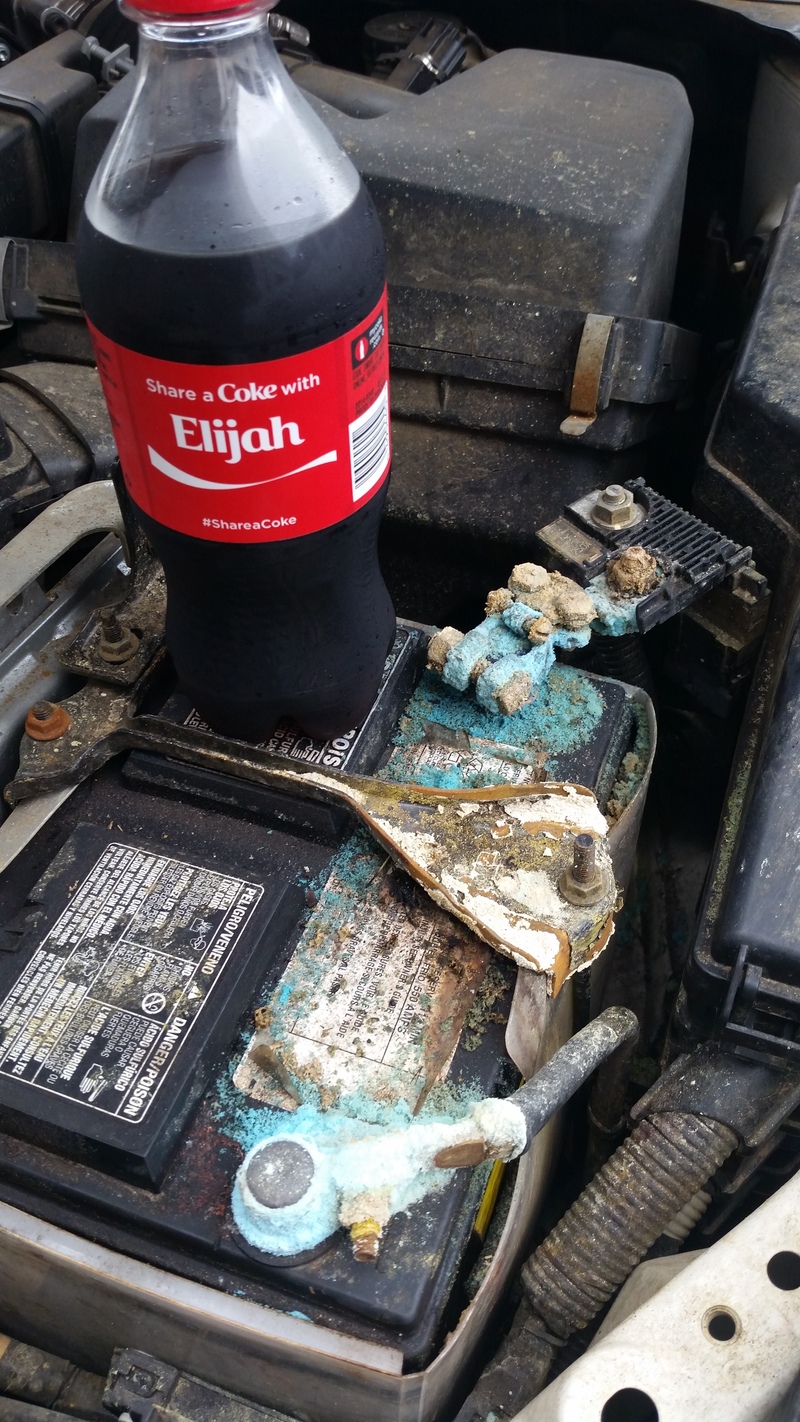
use of a battery post cleaning brush tool is usually helpful
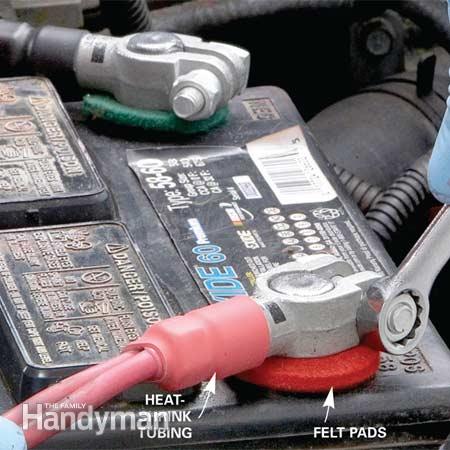
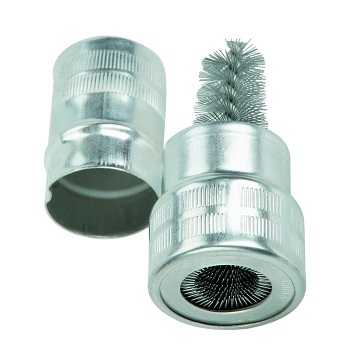
use of this common anti-seize paste on the connecting surfaces noticeably reduces corrosion and helps electrical conductivity
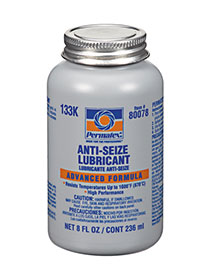
http://www.harborfreight.com/battery-terminal-cleaner-94450.html

use of a battery post cleaning brush tool is usually helpful

use of this common anti-seize paste on the connecting surfaces noticeably reduces corrosion and helps electrical conductivity

http://www.harborfreight.com/battery-terminal-cleaner-94450.html
Last edited by a moderator:
Strictly Attitude
solid fixture here in the forum
This is what we used to use on r-model mack trucks batteries still have a can in my tool box
http://www.napaonline.com/Catalog/C...-Corrosion-Prevention/_/R-LIT97940_0212865359
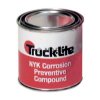
http://www.napaonline.com/Catalog/C...-Corrosion-Prevention/_/R-LIT97940_0212865359


